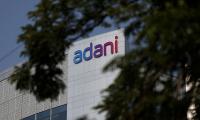ISLAMABAD: An Oxfam report revealed on Thursday that staggering inequality rose sharply across Asia in the wake of Covid-19 devastation as in Pakistan 50 per cent of households were unable to receive medical attention due to lack of money.
The Oxfam -- a British founded confederation of 21 independent charitable organisations focusing on alleviation of global poverty and injustice -- report also disclosed that in Pakistan, one 2020 study estimates that up to 78pc of women living in poverty could have been excluded from Ehsaas payments.
Across Asia, the Covid-19 pandemic devastated lives and livelihoods, taking away 147 million jobs and pushing 148 million Asians into poverty but while most Asians are worse off, the region’s billionaires grew their wealth by $1.46 trillion, leading to a staggering rise in inequality, reveals a new Oxfam report.
According to the recent Oxfam report 'Rising to the challenge: The case for permanent progressive policies to tackle Asia's coronavirus and inequality crisis' was released on Thursday. It stated Asia's richest one percent now own more wealth than the poorest 90 percent.
The impact of Covid-19 combined with the existing inequality has set back equitable development in the region by decades. Existing economic policies are rigged in the favour of the wealthy, allowing them to accumulate incredible amounts of wealth, while narrowing the chances of the poorest to catch up. The report states that household surveys in May 2020 found that 64pc of households in Indonesia and 50pc in Pakistan were unable to receive medical attention due to lack of money. In the Philippines, 46pc of people reported the same issue in August 2020, and this jumped to 59pc in May 2021.
Another study has found that countries with higher levels of Out Of Pocket (OOP) expenditure have higher rates of Covid-19 cases and deaths, 119 which illustrates the vicious cycle of economic and health inequalities that have been exposed and exacerbated by coronavirus. In Pakistan, 22pc had been fully vaccinated by the end of the year, it added.
In Pakistan, more than 9 million families, across more than 90 districts, were enrolled in the Sehat Sahulat Programme, which allowed them access to free health services in both public and private hospitals. One 2020 study also estimates that up to 78pc of women living in poverty could have been excluded from Pakistan’s Ehsaas Emergency Cash payments.
However, the scale of action taken has shown that far more investment is needed and is possible when there is enough political will. For example, Indonesia, South Korea, Pakistan and the Philippines reallocated domestic spending to scale up social protection in response to the pandemic, and this was the only source of funding used in the Philippines.
The distribution of productive assets such as land has also long been highly skewed in Asia. For example, research before the current crisis found that the top 20pc of farmers in Pakistan held 69pc of the country’s agricultural land. In Thailand, the top 10pc owned more than 60pc of land, compared to just 0.07pc for the poorest 10pc.
Longstanding under investment and poor government oversight of public health systems has led to an inadequate and unequal public health response to the pandemic in many countries. This affects poor and marginalized people most. High levels of out-of-pocket (OOP) expenditure for healthcare in the region have created great health inequalities between rich and poor that are being exploited by coronavirus. In 2017, OOP payments accounted for more than 60pc of health spending in Pakistan, Cambodia, India, Bangladesh and Myanmar, 114 and 13pc of households in Asia were experiencing catastrophic expenditure on healthcare before the pandemic.
For example, in Pakistan, 80.5pc of economically inactive women were out of the workforce due to unpaid care responsibilities, compared to just 2.4pc of economically inactive men. The figures were 66.6pc and 6.8pc respectively in Bangladesh and there were also large disparities in Cambodia, Myanmar, Nepal, the Philippines, Thailand and Vietnam.
Many interventions also used the same flawed targeting systems as ongoing social protection schemes, meaning some of the poorest and most vulnerable people will have been excluded from even temporary emergency assistance. For example, studies estimate that Pakistan’s Benazir Income Support Programme excludes up to 73pc of intended recipients, while Indonesia’s Program Keluarga Harapan conditional cash transfer has an 82pc exclusion error.
Similar issues have been identified in Sri Lanka's Samurdhi programme, and the Philippines' 4P programme. The report states that the rate of internet use among girls is half that of boys in Nepal and a quarter in Pakistan.
Vulnerable groups such as women, girls and marginalized workers were worst affected as their incomes shrunk and their access to essential services was reduced. School closures have worsened the education divide with an estimated 10.45 million children dropping out of school and university forever, with far-reaching consequences for them.
"The ongoing pandemic has tested the vulnerabilities of healthcare systems. Covid-19 has acted as an inequality multiplier, widening the gap between the rich and poor, pushing families deeper into poverty. Pakistan government’s steps to improve social protection through its Sehat Sahulat programme, allowed more than 9 million families, across more than 90 districts, to access free health services in both public and private hospitals. Better social protection schemes are needed to protect the vulnerable, especially women, girls, and marginalized communities from the pandemic’s economic pressure," said Syed Shahnawaz Ali, Country Director, Oxfam, in Pakistan.
Pakistan government launched the Ehsaas emergency cash transfer programme, benefiting an estimated 67 million people, and included cash transfers to 6.2 million daily wage workers in the 2021 budget. However, these measures should not be temporary, and needed to be made permanent.
Asia's richest were shielded from the impact of the pandemic and many even thrived. The number of billionaires in the region grew from 803 in March 2020 to 1,087 in November 2021. Billionaires were able to grow their wealth by 74 percent. Some wealthy Asians even profiteered directly from the pandemic and by March 2021 there were 20 new Asian billionaires whose fortunes came from equipment, pharmaceuticals, and services needed for the pandemic response.
Oxfam’s report makes recommendations to address Asia's growing inequality through progressive policy actions by governments that prevent millions of poor Asians from falling through the cracks.
According to the report, a wealth tax of 2 to 5 percent on Asia Pacific's multi-millionaires and billionaires, could raise an additional $776.5 billion every year. That would be enough to increase public spending on health in the region by 60 per cent and can prevent unnecessary and premature deaths in the future or enhance educational opportunities.
Targeting security forces dedicated to maintaining law and order is outright act of terrorism, says Bilawal
EAD data shows Pakistan received $259m from bilateral creditors during first four months of fiscal year
CM discusses several critical projects with Wapda Chairman Lt Gen Sajjad Ghani during meeting
Sindhu has been appointed on contract for one year, appointment is effective immediately until further notice
With approval of federal secretary science and technology, formal orders have been issued
Russia carried out strike on Ukrainian city of Dnipro which Putin said was test of its new missile







